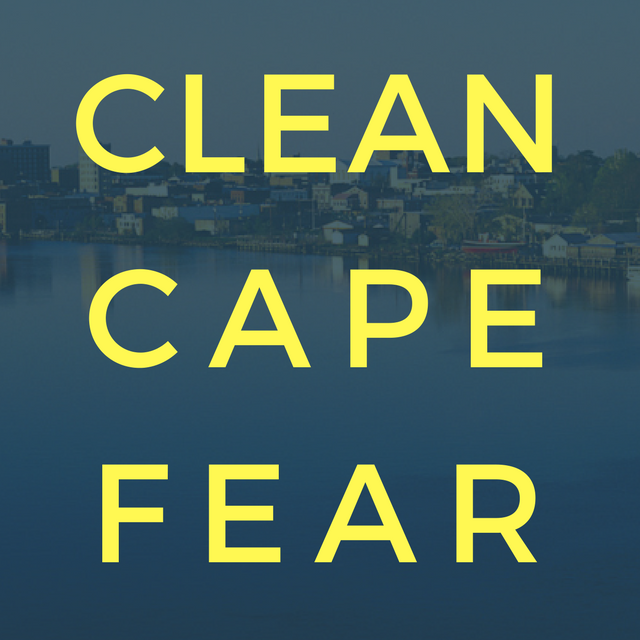Fighting PFAS Contamination In
The Lower Cape Fear Region
What are per- and polyfluoroalkyl substances (PFAS)?
PFAS stands for per- and polyfluoroalkyl substances or, as we like to call them, Permanently Freakish Altering Stuff.
Permanent because they do not biodegrade and there is currently no proven safe disposal method. This is why they are often called “forever chemicals”.
Freakish because the carbon fluorine bond does not naturally occur, it must be forced using intense amounts of energy.
Altering because the health effects associated with these compounds appear to be endocrine disrupting and alter us at a cellular level.
Stuff because the chemical industry has been using PFAS for decades to enhance the performance of food packaging, cell phones, long-lasting mascara, stain-resistance textile products, they’re even used in water filtration and fuel cell storage.
Decades of Deception & Disregard
Manhattan Project & PFAS
In 2019, environmental sociologist Rebecca Altman published the origin story of PFAS linking the chemistry’s earliest developments to the atomic bomb. From the military to Main St., companies like 3M and DuPont began not only developing different “wonder uses” for PFAS but also aggressively marketing them to American consumers as “must have” convenience products. Unfortunately, these companies hid the toxic trade off to soldiers and consumers. They knew PFAS were toxic as early as the 1950s but failed to initially disclose this critical data to U.S. regulators and the American public they fleeced in order to gain decades of profits.
Not only are these “forever chemicals” contaminating the blood of 99% of Americans—they are irresponsibly made and handled, as lawyer Rob Bilott would discover when he began representing a West Virginia farmer in 1999 whose cows were mysteriously dying. Bilott’s journey would become a major motion picture called Dark Waters staring actor and activist Mark Ruffalo—who also produced the film.
While Bilott was discovering DuPont’s PFOA scandal in Parkersburg, WV—over 400 miles away near Fayetteville, NC, DuPont began making PFOA in 2001 at their Fayetteville Works Site.
NASA & Nafion®
DuPont started producing PFAS in North Carolina in 1980 mainly to support the production of Nafion®. DuPont developed Nafion®—a perfluorinated ion exchange resin, in the late 1950s. Nafion® was supplied to General Electric in the 1960s for use in NASA’s Gemini Space Program. Per a DuPont paper: “During the period 1977–1984, DuPont invested in building a monomer, polymer, and membrane fabrication plant in Fayetteville NC to meet the needs of the Chloralkali market.” By 2004, DuPont claimed: “the Chloralkali industry is the largest market for our Nafion® products.”
In 2015, DuPont spun-off their PFAS manufacturing and liability into a new company called Chemours. Two years later, Chemours publicly acknowledged their Fayetteville Works facility dumped large quantities of PFAS into the Cape Fear River and released toxic amounts into the air, as far back as 1980.
June 15, 2017: Protest along the Cape Fear River in downtown Wilmington,NC organized by Dr. Kyle Horton.
Toxic Tap Water
In June 2017, Wilmington, NC residents publicly learned about PFAS in their tap water when a local investigative reporter published a front page headline story titled “Toxins Taint CFPUA Drinking Water” in the StarNews. The article documented findings from a NC State research study published six months prior which detected alarming amounts of GenX and other PFAS in the finished tap water provided by Cape Fear Public Utility Authority—the municipal water district for Wilmington residents. The major source of the PFAS was a fluorochemical manufacturer called Chemours, formerly DuPont, located 80 miles away near Fayetteville, NC. We would quickly learn the tap water contamination impacted not just Wilmington residents, but municipal water supplies in Brunswick County and parts of Pender county—as well as thousands of private well owners living near the Chemours facility in Fayetteville.
Overview of PFAS in North Carolina
In 2020, Clean Cape Fear participated in a video produced by Vox, featuring actor/producer Mark Ruffalo, explaining PFAS contamination in North Carolina. The Cape Fear River is the primary drinking water supply for over 1.5 million residents in NC. It flows south east for over 200 miles, passing by three major North Carolina cities before reaching Wilmington, which sits at the bottom of the river basin and collects drainage and runoff from over 29 counties across the state.



